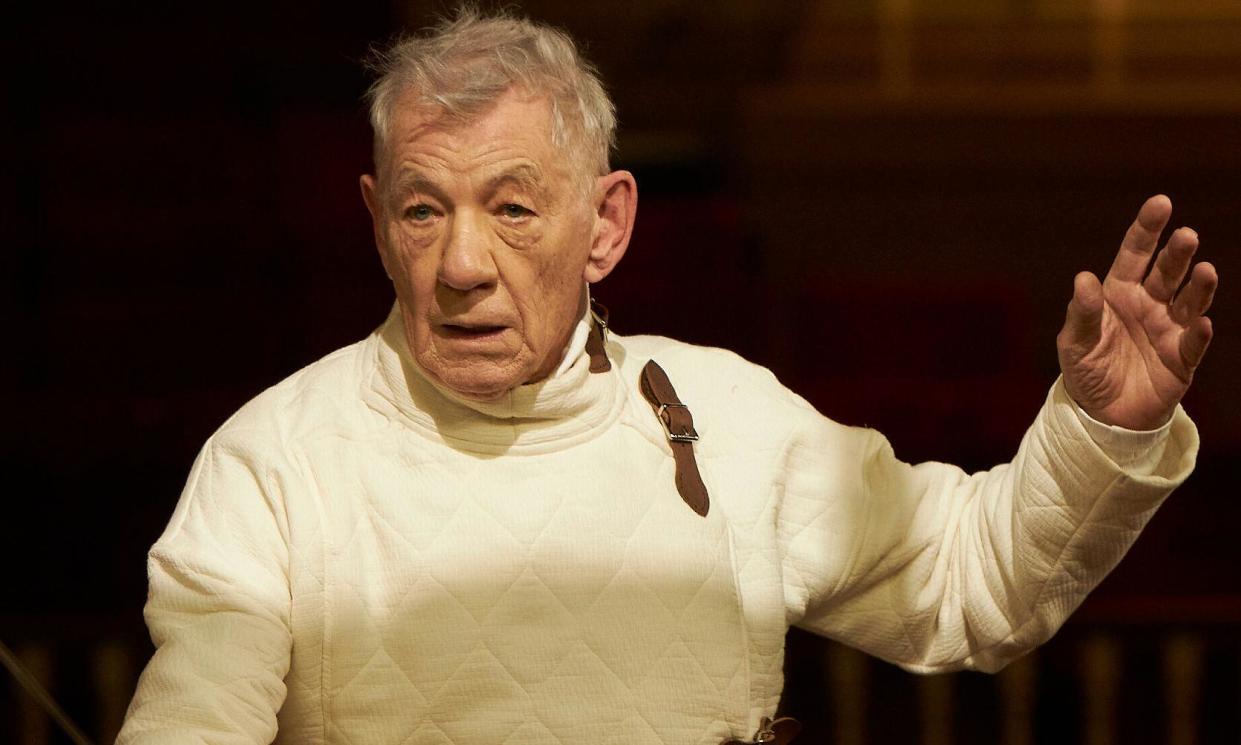The film’s the thing: Ian McKellen’s new Hamlet shows the screen can outdo the stage

How best to film a stage production? You can, of course, simply have multiple cameras present at a performance as in NT Live. You can recreate the original as in Richard Eyre’s fine film of his Almeida version of Ibsen’s Ghosts. Or you can reimagine the whole thing, as Sean Mathias has done in his film of the Ian McKellen Hamlet first staged at Windsor in 2021. I not only find the film far more cohesive and exciting than the stage production: it also raises big issues about the relationship between theatre and cinema.
Mathias’s method is to film Hamlet in every nook and cranny of the Theatre Royal, Windsor. The one exterior shot shows McKellen roaming round the building as if anxious to be part of the action within: what follows could plausibly be seen as an ageing actor’s dream of once more playing Hamlet. But what really hits you is Mathias’s inventive use of the theatrical space. Hamlet has his own retiring-room complete with exercise bike and foils. Claudius wines and dines Rosencrantz and Guildenstern in a hospitality suite. Having publicly mocked Polonius in the theatre foyer, Hamlet, after killing the old man, is held captive in one of the toilets.
There is a logic to using the Theatre Royal as a stand-in for Elsinore since, as a play, Hamlet is obsessed with the nature of performance. Frances Barber as the Player King delivers her rhetorical speech about Pyrrhus in front of the Safety Curtain. For the play scene itself, McKellen initially sits behind a director’s desk while Claudius and his entourage occupy the front stalls unaware that they are being filmed by Horatio. On returning to Denmark, Hamlet even at first observes the Gravedigger from the vantage point of a theatre box. You are never allowed to forget that this is Shakespeare’s most self-consciously theatrical play.
But inevitably audiences will be drawn to the cinema by McKellen and it is fascinating to observe the subtle recalibration of his performance. In the theatre I was struck by his phenomenal physical energy, as if he were seeking to overcome the fact that he was in his early 80s. In the realistic medium of cinema, there is no denying his age and the camera lingers on his seamed, lined features.
But McKellen uses this to his advantage to present us with a quieter, more meditative Hamlet. “To be or not to be,” originally spoken from a barber’s chair, is now delivered into Horatio’s tape recorder as if the summation of a lifetime’s experience. In the nunnery scene, McKellen also treats Alis Wyn Davies’s Ophelia with exceptional kindness, rather than the usual psychotic misogyny. He even dies with a smile on his lips as if aware of the absurdity of existence. It is fair to say that Jonathan Hyde’s smoothly guilt-ridden Claudius and Steven Berkoff’s militaristic Polonius likewise use the camera to their advantage.
Neil Oseman, the director of photography, clearly deserves much of the credit for the film’s success. But the whole project raises the question of whether cinema can enhance a theatrical experience. I remember coming out of the first NT Live screening of Phèdre and meeting a famous director who said: “That was better than it was in the theatre, wasn’t it?” The reverse can also be true. The film of Olivier’s Othello now seems a racially offensive anachronism and a denial of a great actor’s power. While remaining a passionate advocate of live performance, I still feel we have to acknowledge that times have radically changed: that film can not only make theatre available to many more people but can also provide an experience comparable to, or occasionally even better than, that in theatre. The proof lies in the McKellen Hamlet.
Hamlet is in UK cinemas on 27 February


